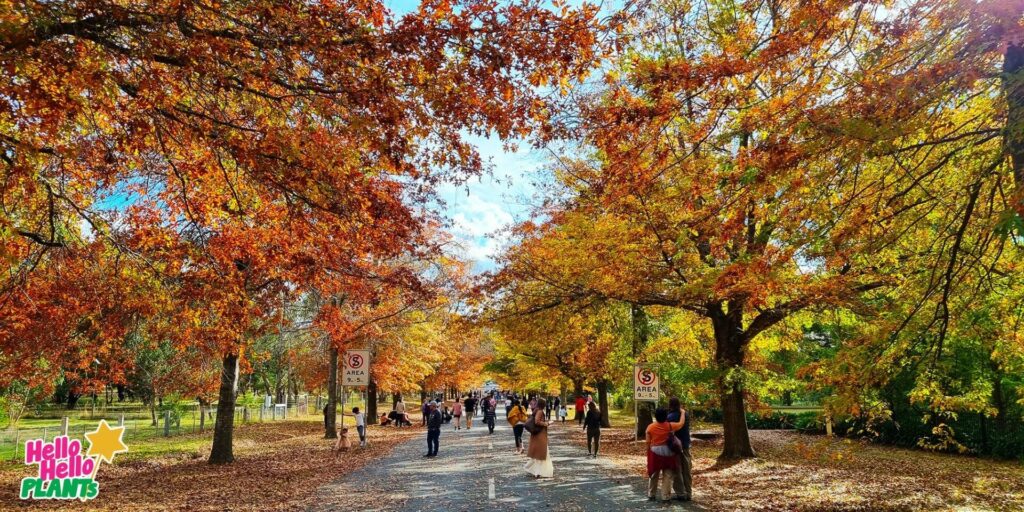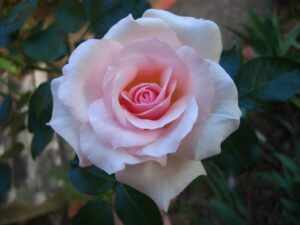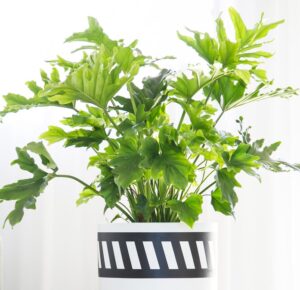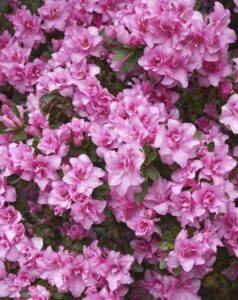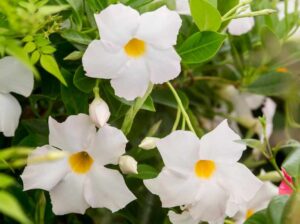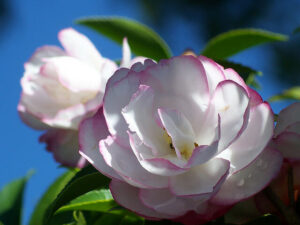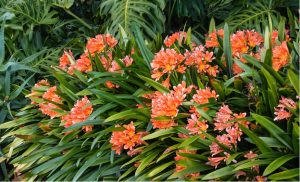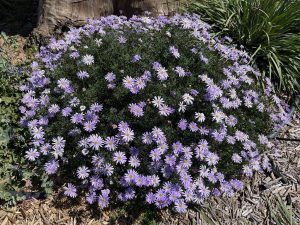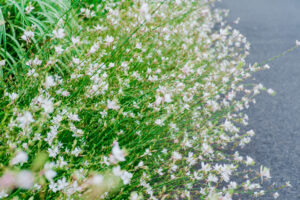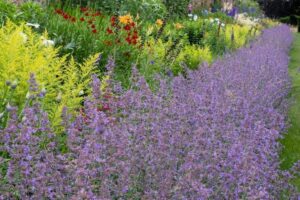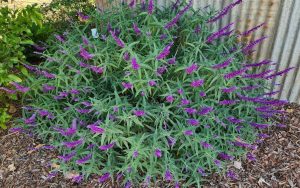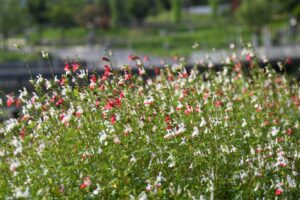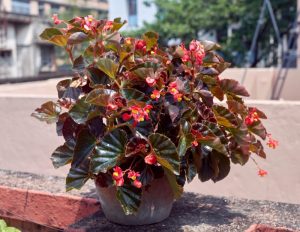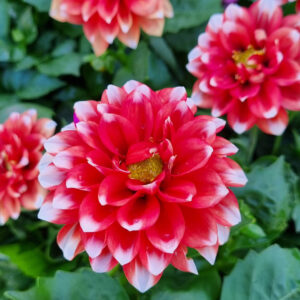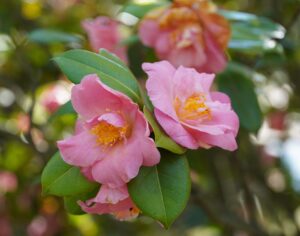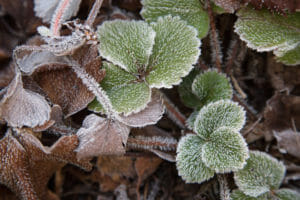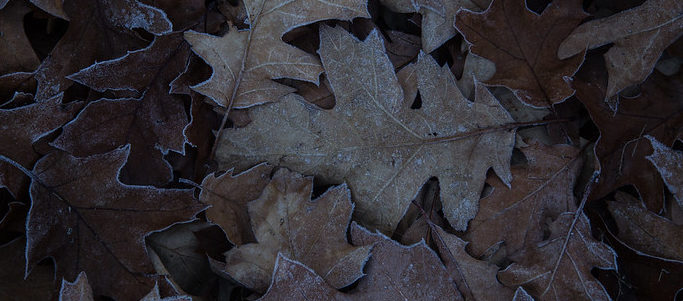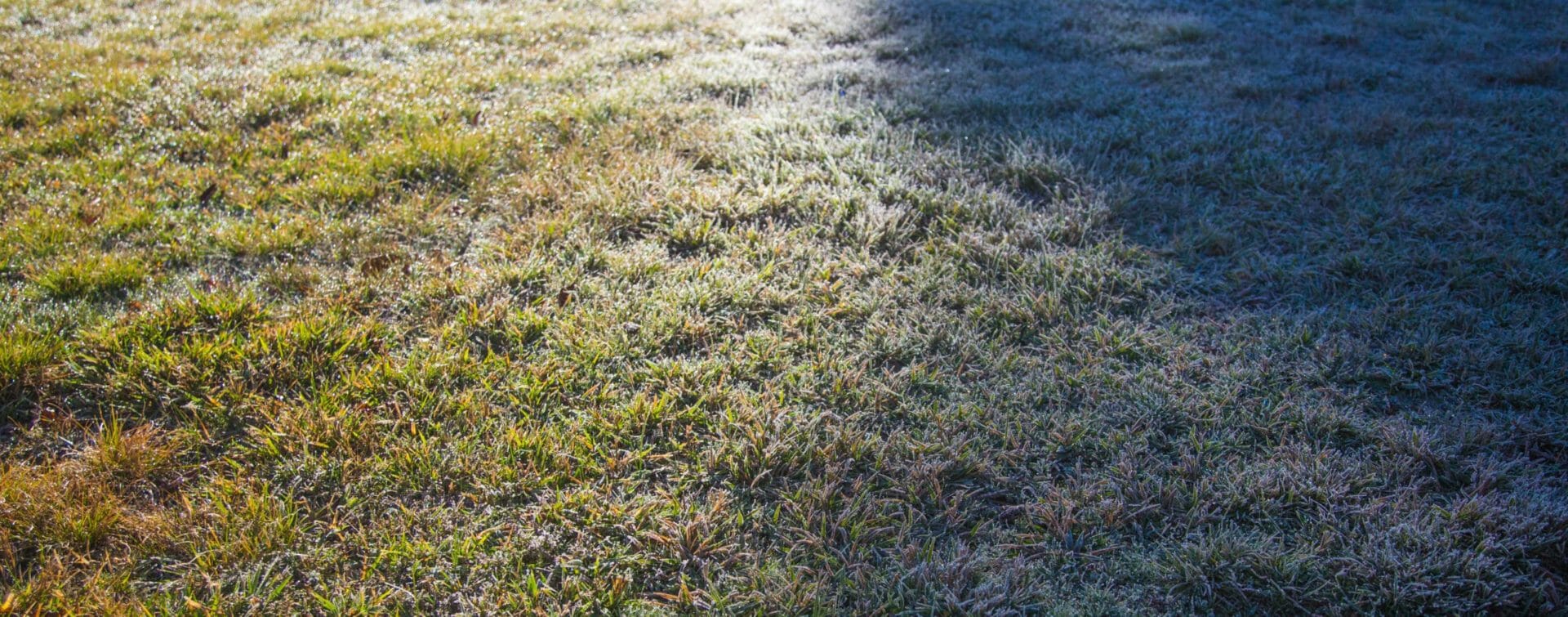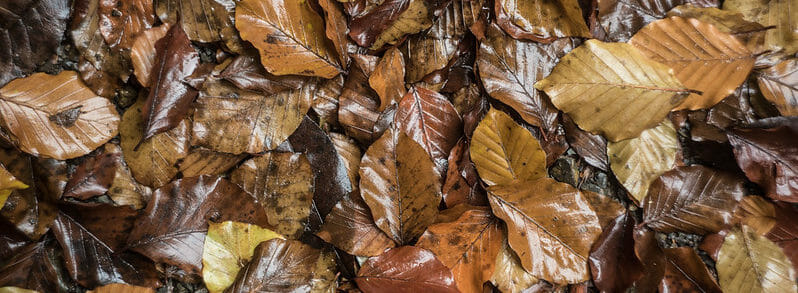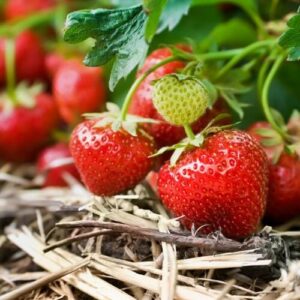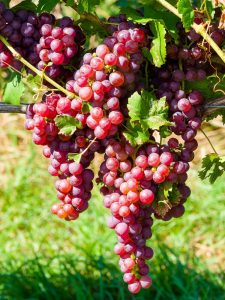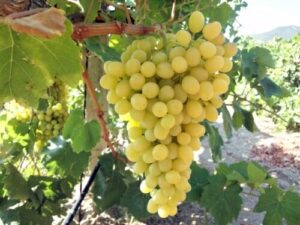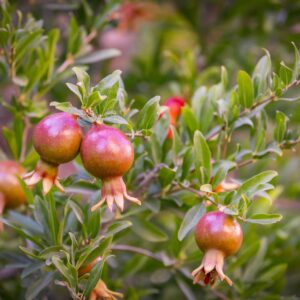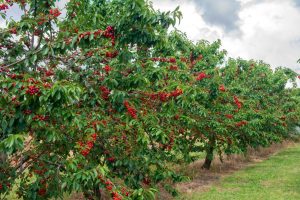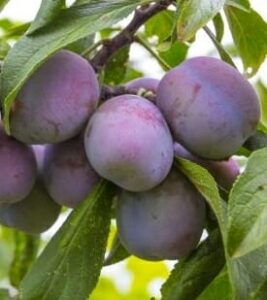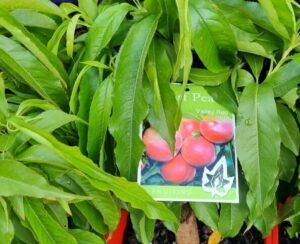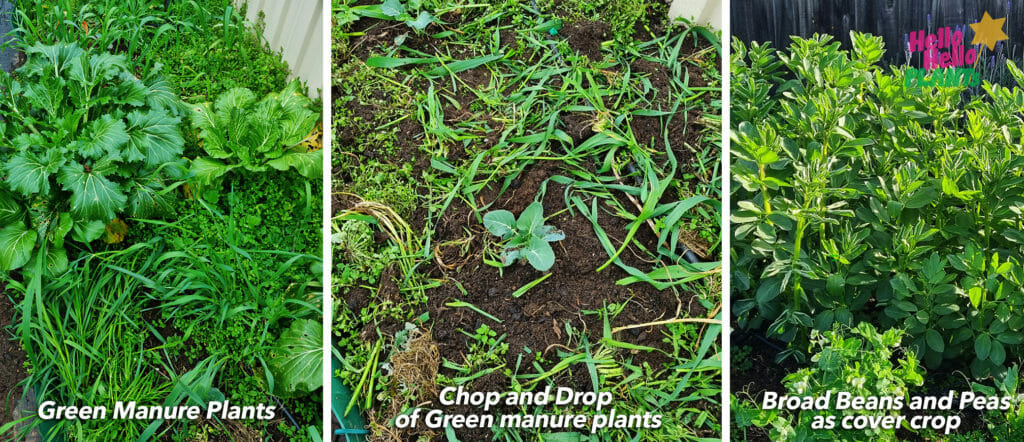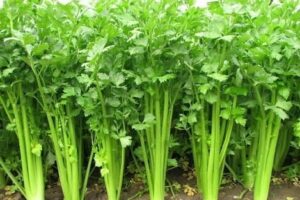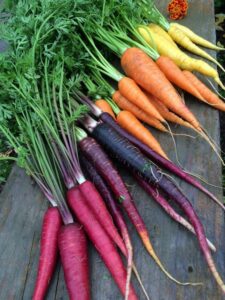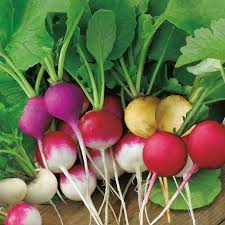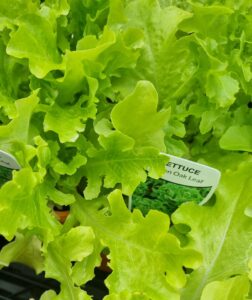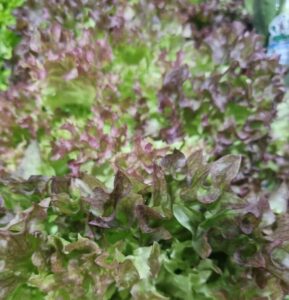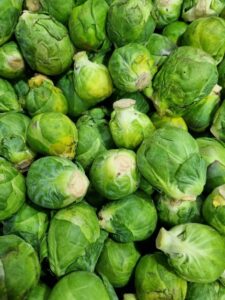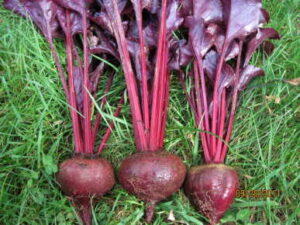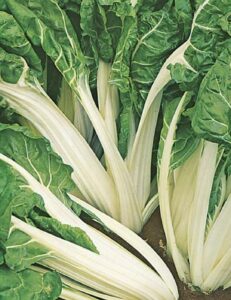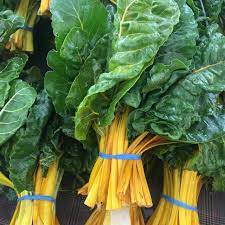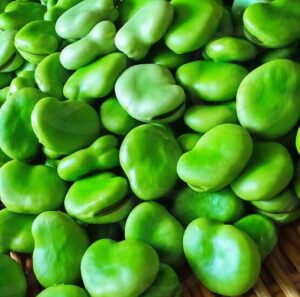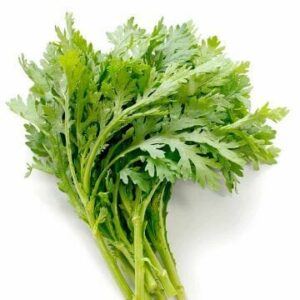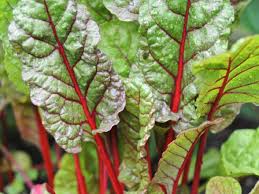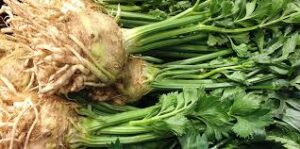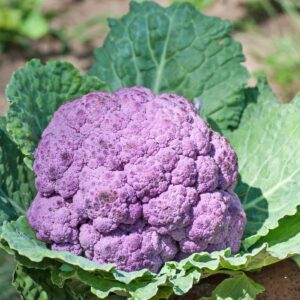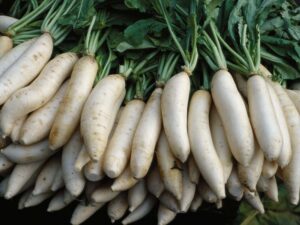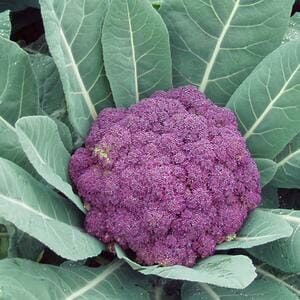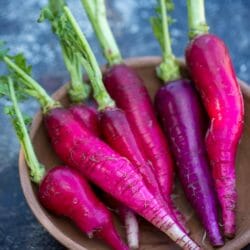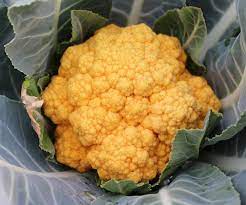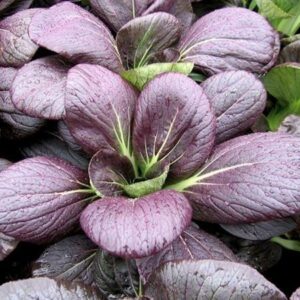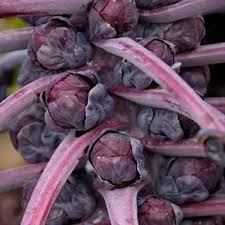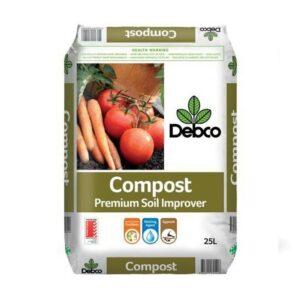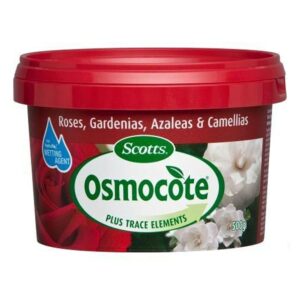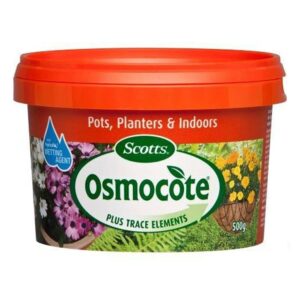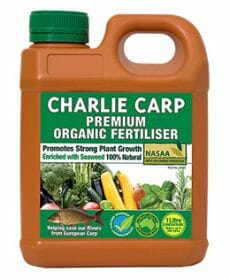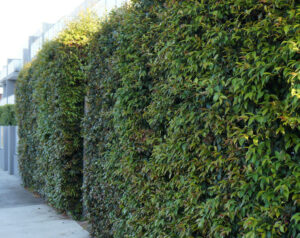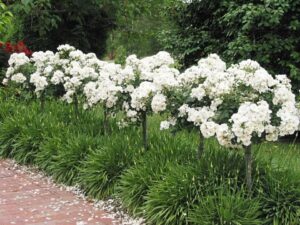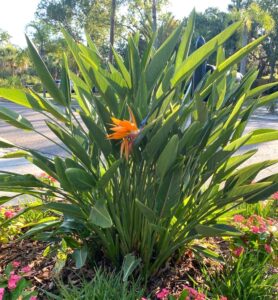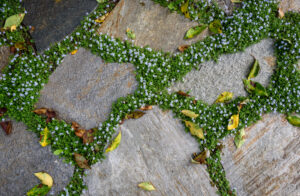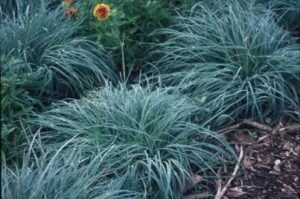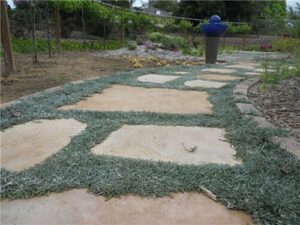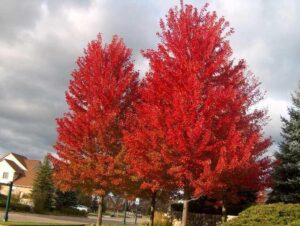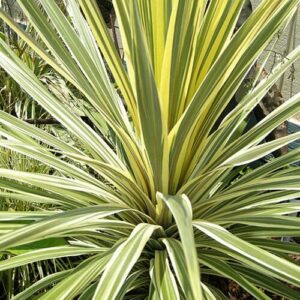
May in the Garden 2022!
Let the cold weather begin! May brings the first frosts, cold nights and a blaze of Autumn colour and leaf fall from our deciduous trees and shrubs. There are lots of trees still bearing beautiful autumn foliage such as the Crimson Sentry Maples, London Plane trees and Golden Elms but by the end of the month, most deciduous trees will be completely bare and in their stark, sculptural winter form.
However, it’s not all grim for May as there are some beautiful flowers blooming and a lot of delicious fruit to harvest. Get some gardening gloves ready, as there are quite a lot of things to get done during this time, in preparation for the months to come.
Check out our articles about the Top 10 Autumn Trees, Top 10 Autumn shrubs and Top 10 places to visit in Victoria this Autumn.
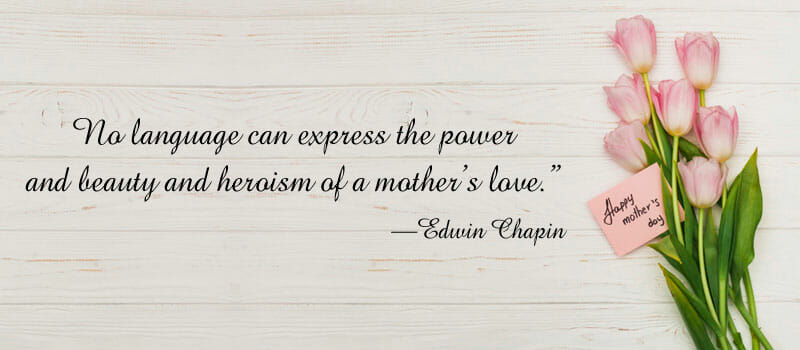 With Mother’s Day right around the corner, come to the nursery and get some lovely plants to treat your mum and grandmother. We have a big range of indoor plants to brighten up the kitchen or living room, some fragrant flowers, flowering trees and so much more at very low prices! Or you can also get a gift voucher, which might be more convenient. These can be mailed by post or emailed and can be redeemed in-store or even online.
Make sure to check out our article about the Top 10 plants for Mothers coming soon!
• Camellias. Queens of the winter flowers, Camellias are attractive evergreen shrubs that are highly prized for the beauty of their exquisite blooms, their splendid evergreen foliage and their compact shapely habit.
With Mother’s Day right around the corner, come to the nursery and get some lovely plants to treat your mum and grandmother. We have a big range of indoor plants to brighten up the kitchen or living room, some fragrant flowers, flowering trees and so much more at very low prices! Or you can also get a gift voucher, which might be more convenient. These can be mailed by post or emailed and can be redeemed in-store or even online.
Make sure to check out our article about the Top 10 plants for Mothers coming soon!
• Camellias. Queens of the winter flowers, Camellias are attractive evergreen shrubs that are highly prized for the beauty of their exquisite blooms, their splendid evergreen foliage and their compact shapely habit.

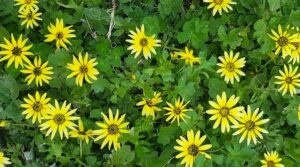 Weeds run rampant this time of year. You may have seen more and more popping up in the garden such as Bindii, Capeweed and the culinary Mustard weed.
Due to the increase in moisture from the autumn rains, the soil is loose, making weeds easier to pull out. As some of these weeds are just starting to appear it is always good to get them out while they’re young and their roots haven’t taken hold. If your weeds don’t have seeds on them, chuck them into your compost for added nitrogen!
Weeds run rampant this time of year. You may have seen more and more popping up in the garden such as Bindii, Capeweed and the culinary Mustard weed.
Due to the increase in moisture from the autumn rains, the soil is loose, making weeds easier to pull out. As some of these weeds are just starting to appear it is always good to get them out while they’re young and their roots haven’t taken hold. If your weeds don’t have seeds on them, chuck them into your compost for added nitrogen!
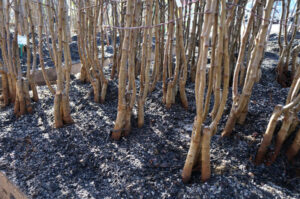 It’s almost time for BARE ROOTED FRUIT TREES and other wonderfully cheap deciduous trees! Winter marks the time for bare roots so it’s best to get your garden beds prepared.
Till your soil, create a loose, well-draining medium and make sure it is free from pests and diseases. Turn in any fallen autumn leaves and ready compost you may have so it can rest for the month before planting. Give the bed good watering to keep all your microorganisms happy and healthy!
More information about Bare Rooted plants & why we love them here.
It’s almost time for BARE ROOTED FRUIT TREES and other wonderfully cheap deciduous trees! Winter marks the time for bare roots so it’s best to get your garden beds prepared.
Till your soil, create a loose, well-draining medium and make sure it is free from pests and diseases. Turn in any fallen autumn leaves and ready compost you may have so it can rest for the month before planting. Give the bed good watering to keep all your microorganisms happy and healthy!
More information about Bare Rooted plants & why we love them here.
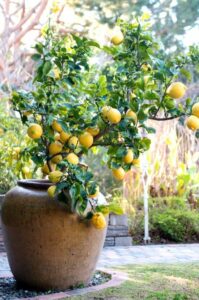 If you haven’t done so already, get your citrus and evergreen fruit trees in the ground now. That’s all your lemons, limes and oranges as well as guavas like Feijoa, Chilean and Strawberry guava. Dig a hole twice the size of the pot and water the hole. Partly fill your new hole so that you can place the plant’s root ball into it so the top of the root ball is level with the top of the soil. Back-fill with a light, fluffy soil or well-composted soil, nothing too rich. Keep weeds and lawn away from the base of the tree as these plants have shallow roots and don’t want to compete for water and nutrients. Mulch around the base, keeping the mulch away from the trunk. This will keep the weeds away, and the soil warm and moist until the spring. Water once per week or as needed as even winter can be dry! Some fruits that you can harvest right now are persimmons, various citrus fruit, feijoas, raspberries and strawberries.
• Citrus plants. We have some nice big mature plants with fruit already on them! These are fantastic varieties that were originally destined for Victorian fruit farms, so you know they were born to produce fruit, plus they are on Sale right now.
• Berries. Put in some delicious berries for that homegrown freshness.
• Various fruit. Here is a great selection of the most popular and rare dwarf varieties, ideal for small spaces. Some are in limited quantities, so better hurry up.
Click here for a full list of fertilizers.
Click here to view a chart of various possible deficiencies in plants.
If you haven’t done so already, get your citrus and evergreen fruit trees in the ground now. That’s all your lemons, limes and oranges as well as guavas like Feijoa, Chilean and Strawberry guava. Dig a hole twice the size of the pot and water the hole. Partly fill your new hole so that you can place the plant’s root ball into it so the top of the root ball is level with the top of the soil. Back-fill with a light, fluffy soil or well-composted soil, nothing too rich. Keep weeds and lawn away from the base of the tree as these plants have shallow roots and don’t want to compete for water and nutrients. Mulch around the base, keeping the mulch away from the trunk. This will keep the weeds away, and the soil warm and moist until the spring. Water once per week or as needed as even winter can be dry! Some fruits that you can harvest right now are persimmons, various citrus fruit, feijoas, raspberries and strawberries.
• Citrus plants. We have some nice big mature plants with fruit already on them! These are fantastic varieties that were originally destined for Victorian fruit farms, so you know they were born to produce fruit, plus they are on Sale right now.
• Berries. Put in some delicious berries for that homegrown freshness.
• Various fruit. Here is a great selection of the most popular and rare dwarf varieties, ideal for small spaces. Some are in limited quantities, so better hurry up.
Click here for a full list of fertilizers.
Click here to view a chart of various possible deficiencies in plants.
 Blackspot and Rust commonly affect Rose plants. If you notice any of those on your roses, you can cut them back lightly, remove the diseased leaves, spray the remaining leaves with some organic copper-based fungicide, and also fertilize them to encourage new growth and blooms.
Powdery mildew is one of the most commonly occurring plant problems at this time of the year. It is a fungal disease that affects plant leaves and stems, coating them in what looks like a white or grey powder-like substance. In severe cases, powdery mildew can even spread to the buds, flowers, and fruits of plants. A simple remedy is a good spray of the following mix: 1 tablespoon baking soda with 1 tablespoon vegetable oil and 1 teaspoon dish soap in 1 gallon of water. Another option is a mix of 1 part milk with 10 parts of water. If this natural remedy fails to get rid of it, you can look into Sulphur based fungicides.
Root rot and Wet Feet are the most damaging ailments our houseplants can suffer from, and one of the most common. An infection can destroy a plant literally from the ground up. It spreads quickly, and without prompt action, it’s soon too late. Roots of plants affected by root rot may turn from firm and white to black/brown and soft. Affected roots may also fall off the plant when touched. The leaves of affected plants may also wilt, become small or discoloured. Affected plants may also look stunted due to poor growth, develop cankers or ooze sap. Once root rot is identified, you must determine if the plant can be saved. If the entire root system has already become mushy, it is too late to save the plant. However, if some healthy, white, firm roots exist, try to bring the plant back to good health by replanting in fresh soil with good drainage.Click here to read more about wetfeet.
Blackspot and Rust commonly affect Rose plants. If you notice any of those on your roses, you can cut them back lightly, remove the diseased leaves, spray the remaining leaves with some organic copper-based fungicide, and also fertilize them to encourage new growth and blooms.
Powdery mildew is one of the most commonly occurring plant problems at this time of the year. It is a fungal disease that affects plant leaves and stems, coating them in what looks like a white or grey powder-like substance. In severe cases, powdery mildew can even spread to the buds, flowers, and fruits of plants. A simple remedy is a good spray of the following mix: 1 tablespoon baking soda with 1 tablespoon vegetable oil and 1 teaspoon dish soap in 1 gallon of water. Another option is a mix of 1 part milk with 10 parts of water. If this natural remedy fails to get rid of it, you can look into Sulphur based fungicides.
Root rot and Wet Feet are the most damaging ailments our houseplants can suffer from, and one of the most common. An infection can destroy a plant literally from the ground up. It spreads quickly, and without prompt action, it’s soon too late. Roots of plants affected by root rot may turn from firm and white to black/brown and soft. Affected roots may also fall off the plant when touched. The leaves of affected plants may also wilt, become small or discoloured. Affected plants may also look stunted due to poor growth, develop cankers or ooze sap. Once root rot is identified, you must determine if the plant can be saved. If the entire root system has already become mushy, it is too late to save the plant. However, if some healthy, white, firm roots exist, try to bring the plant back to good health by replanting in fresh soil with good drainage.Click here to read more about wetfeet.
That’s all for this month! Thanks for reading our Gardening in May Article. 🙂
See you in-store here at 1477 Sydney Road, Campbellfield!
Gardening in Autumn, May in the Garden. Melbourne, Victoria, Australia.
Mother’s Day! Sunday, 14th May!
 With Mother’s Day right around the corner, come to the nursery and get some lovely plants to treat your mum and grandmother. We have a big range of indoor plants to brighten up the kitchen or living room, some fragrant flowers, flowering trees and so much more at very low prices! Or you can also get a gift voucher, which might be more convenient. These can be mailed by post or emailed and can be redeemed in-store or even online.
With Mother’s Day right around the corner, come to the nursery and get some lovely plants to treat your mum and grandmother. We have a big range of indoor plants to brighten up the kitchen or living room, some fragrant flowers, flowering trees and so much more at very low prices! Or you can also get a gift voucher, which might be more convenient. These can be mailed by post or emailed and can be redeemed in-store or even online.
Top picks for mum!
Forget the boring common bunches of flowers that everybody buys, and get something that will undoubtedly make mum happy for years to come! Here is a selection of the best fragrant and beautiful flowering plants that keep on giving!-
-
-
-
-
-
Camellia sasanqua ‘Paradise® Pearl’ 8″ Pot
0Original price was: $49.99.$39.99Current price is: $39.99. -
What is flowering right now?
There are some beauties just about to flower, such as camellias, begonias, salvias, Dianthus and some delightfully scented daphnes. • Cottage Flowers. Add some popping colour to your garden and attract and feed the pollinators.May in the Garden
Frosts & Frost Coverings
On still, cold nights, frost forms on our lawns, windscreens and makes our early morning starts even more difficult, particularly getting out of bed! In May, frost really only forms in regional areas and the very outer suburbs of Melbourne, where it gets cold enough to form ice. Conditions have to be still with no clouds, and temperatures that drop below freezing. Cold air is heavier than warm, so frost stays low to the ground and often rolls downhill, pooling in low points or gullies. Hedges and fences can catch rolling frost down a slope, which can cause a rather frosty spot.How does frost form?
Frost forms from water vapour in the air, coming in contact with an object that is below freezing temperature. So basically, when the moisture in the air touches a freezing cold windscreen, the moisture sticks to the windscreen and turns to ice! When it comes to our plants, they expel energy continuously throughout the day and the night. Energy is warmth! During the day, their expelled energy is replaced by radiant heat from the sun, but at night time they become cooler as their warmth is not continually replaced. When the plant cools enough to get to freezing temperatures, frost can then form on its leaves. You may notice under large trees there is little to no frost. Large trees shelter the plants and grass underneath. Their canopy radiates energy downward from the underside of their leaves, as these “breathe out”. This expulsion of energy keeps the area under the tree warmer for longer during the night. This is why planting your more frost-sensitive plants under trees and shelter can help protect them from frost. Some plants can handle frost better than others. The moisture inside of the plant’s cells freezes and like all frozen water expands it can cause stress on the cells and therefore damage the plant. When the ice is quickly thawed by the morning sun, it causes the most damage to the plant. If your plants have been damaged by frost, don’t cut off the damaged foliage until the frosts have finished as this dead foliage will actually act as protection for future frosts.How to tackle frost
- Cover your frost-sensitive plants with sheets, newspaper or straw, making sure to remove it the following day.
- Lightly water your plants before sunrise by a sprinkler system (or by hand if you’re really keen!) This can prevent frost from forming. You can lightly water frost affected plants, which gently thaws the ice, reducing the damage from the frost.
- Use plastic sleeves and stakes to protect plants in open areas

Weeding

Arctotheca calendula Capeweed in flower
Free plant nutrition in your autumn leaves!
Most of the leaves have fallen off the trees so we now have an abundance of free plant food! Every year, hundreds of Victorians begrudgingly get out their rakes and green bins and begin to rake up those fallen leaves to toss out. But little do they know they are throwing away valuable material. Almost everything in the garden is recyclable and leaves are certainly no exception. Leaves naturally fall around trees, creating a soft, decomposing bed around the base of the tree, keeping the soil protected and warm as well as eventually breaking down and improving the soil. Trees are very clever and prepare their own soil! In smaller gardens, fallen leaves should be removed to allow the lawn to grow (as leaf-littered lawns will die in patches) and prevent them from harbouring snails and slugs, as they love living in this moist environment. Collect and store your autumn leaves for use throughout the year. It is best to try and compost or decompose your leaves from the beginning as dried leaves are a hot spot for earwigs to nest. These little pests usually help the decomposition process but they can also cause a lot of damage to your lush plants, much like snails and slugs! If you want to store them dry, store them in a sealed container so these pests can’t get in. You can store your precious collected leaves in a large barrel, garden bin or even a garbage bag. Water them down to keep them moist and promote fungal growth, furthering the decomposition. If they’re stored in a large bin, layer them like you would your compost bin, with high nitrogen plants to replace the nitrogen the leaves have lost. (This would be a great use for all your pulled out weeds!) Leaves can also be added to your compost if it is smelling bad from too much vegetable matter and this adds phosphate, potassium and other essential elements. Leaves take 6-12 months to break down and become useful compost/mulch for your garden beds.Bare Root is coming…
 It’s almost time for BARE ROOTED FRUIT TREES and other wonderfully cheap deciduous trees! Winter marks the time for bare roots so it’s best to get your garden beds prepared.
Till your soil, create a loose, well-draining medium and make sure it is free from pests and diseases. Turn in any fallen autumn leaves and ready compost you may have so it can rest for the month before planting. Give the bed good watering to keep all your microorganisms happy and healthy!
More information about Bare Rooted plants & why we love them here.
It’s almost time for BARE ROOTED FRUIT TREES and other wonderfully cheap deciduous trees! Winter marks the time for bare roots so it’s best to get your garden beds prepared.
Till your soil, create a loose, well-draining medium and make sure it is free from pests and diseases. Turn in any fallen autumn leaves and ready compost you may have so it can rest for the month before planting. Give the bed good watering to keep all your microorganisms happy and healthy!
More information about Bare Rooted plants & why we love them here.
Evergreen Fruits
 If you haven’t done so already, get your citrus and evergreen fruit trees in the ground now. That’s all your lemons, limes and oranges as well as guavas like Feijoa, Chilean and Strawberry guava. Dig a hole twice the size of the pot and water the hole. Partly fill your new hole so that you can place the plant’s root ball into it so the top of the root ball is level with the top of the soil. Back-fill with a light, fluffy soil or well-composted soil, nothing too rich. Keep weeds and lawn away from the base of the tree as these plants have shallow roots and don’t want to compete for water and nutrients. Mulch around the base, keeping the mulch away from the trunk. This will keep the weeds away, and the soil warm and moist until the spring. Water once per week or as needed as even winter can be dry! Some fruits that you can harvest right now are persimmons, various citrus fruit, feijoas, raspberries and strawberries.
• Citrus plants. We have some nice big mature plants with fruit already on them! These are fantastic varieties that were originally destined for Victorian fruit farms, so you know they were born to produce fruit, plus they are on Sale right now.
If you haven’t done so already, get your citrus and evergreen fruit trees in the ground now. That’s all your lemons, limes and oranges as well as guavas like Feijoa, Chilean and Strawberry guava. Dig a hole twice the size of the pot and water the hole. Partly fill your new hole so that you can place the plant’s root ball into it so the top of the root ball is level with the top of the soil. Back-fill with a light, fluffy soil or well-composted soil, nothing too rich. Keep weeds and lawn away from the base of the tree as these plants have shallow roots and don’t want to compete for water and nutrients. Mulch around the base, keeping the mulch away from the trunk. This will keep the weeds away, and the soil warm and moist until the spring. Water once per week or as needed as even winter can be dry! Some fruits that you can harvest right now are persimmons, various citrus fruit, feijoas, raspberries and strawberries.
• Citrus plants. We have some nice big mature plants with fruit already on them! These are fantastic varieties that were originally destined for Victorian fruit farms, so you know they were born to produce fruit, plus they are on Sale right now.-
Citrus ‘Lane’s Late Navel’ Orange 4L Pot
0Original price was: $54.99.$49.99Current price is: $49.99.
The Vegetable Patch
Green Manure Crops Not everyone is keen to be gardening in the cold of winter! You can simply grow some green manure crops and let them do their thing. When you chop and drop them right before Spring, they will decay and improve your soil nutrition and texture! Late autumn-winter is bean and pea planting season. These wonderful, plentiful veggies are best planted now. They add nitrogen into an otherwise depleted veggie bed and provide an abundance of peas and beans at the same time! Two for one! At the end of the season, your veggie bed will be ready for your spring crop. For a good green manure crop plant beans such as broad or fava bean, peas, oats, fenugreek, lupins, subterranean clover and woolly pod vetch. You can find them as green manure seed packs, sold by several companies across Australia. Other things to note…- Before planting Autumn and Winter veg, enrich your soil by top dressing with some compost and manure and let it settle for a week. If the soil is too hard from being baked by the summer heat, you can gently turn it over to incorporate some organic matter into it, which will make new crops grow better. If you have hard or clay soil you can also add some soil wetter to make water penetrate more easily and retain moisture.
- Give new seedlings a good boost with an application of liquid fertiliser after a week and they will reward you later on.
Fertilizing
Due to the frequent rain in Autumn, nutrients leach away from the soil. Nitrogen or Nitrates are the most common essential nutrients that leach away, along with other highly soluble minerals such as calcium. You may tend to notice discolouration or yellowing leaves on your plants. Use slow-release fertilizers or seaweed solutions instead of traditional instant “NPK” ones. These take time to break down and give a steady supply of nutrients for a few months. Choosing the right fertilizer for the right plant is important as these contain trace elements that the specific plants require which are often scarce in normal soil. Gardenias, Camelias and Azaleas can use some fertiliser right now as they are about to bloom!Pests and Disease
Humid and cool conditions can cause a proliferation of pests and diseases in the garden. Identify them early, treat them, and keep your plants healthy all through Autumn and Winter. Cabbage Butterflies and Moths are the most common at the end of Autumn. White Cabbage butterflies lay their eggs on our Brassicas, such as broccoli and cauliflower. Little green caterpillars hatch from these eggs and then get to work chewing holes through the plants. There are several ways to control them: -Netting- You can protect your young crop by covering them with netting that would prevent the butterflies from reaching them. -Companion plants- Plant some strong-smelling herbs such as lavender, sage, and rosemary that seem to discourage cabbage moths from settling and laying eggs. Try planting them around the edges of your patch to form an odour barrier. You can also plant decoy plants such as nasturtiums, dill, and mustard, which will draw egg layers away from your main crops. –Using decoy ‘Scarecrows‘- Cabbage moths are highly territorial and will avoid laying eggs where there’s already competition for food. Use little decoys around brassicas to send them somewhere else. Here is a great little printable template that you can use. Click Here to see the template. This template was created by the Australian Butterfly Conservation. – Dipel – An organic biological insecticide based on Bacillus thuringiensis var. kurstaki, which is an insecticide derived from beneficial bacteria found in soil, on plant surfaces and also in insects. It specifically targets caterpillars and is safe for beneficial insects such as ladybirds and bees. Blackspot and Rust commonly affect Rose plants. If you notice any of those on your roses, you can cut them back lightly, remove the diseased leaves, spray the remaining leaves with some organic copper-based fungicide, and also fertilize them to encourage new growth and blooms.
Powdery mildew is one of the most commonly occurring plant problems at this time of the year. It is a fungal disease that affects plant leaves and stems, coating them in what looks like a white or grey powder-like substance. In severe cases, powdery mildew can even spread to the buds, flowers, and fruits of plants. A simple remedy is a good spray of the following mix: 1 tablespoon baking soda with 1 tablespoon vegetable oil and 1 teaspoon dish soap in 1 gallon of water. Another option is a mix of 1 part milk with 10 parts of water. If this natural remedy fails to get rid of it, you can look into Sulphur based fungicides.
Root rot and Wet Feet are the most damaging ailments our houseplants can suffer from, and one of the most common. An infection can destroy a plant literally from the ground up. It spreads quickly, and without prompt action, it’s soon too late. Roots of plants affected by root rot may turn from firm and white to black/brown and soft. Affected roots may also fall off the plant when touched. The leaves of affected plants may also wilt, become small or discoloured. Affected plants may also look stunted due to poor growth, develop cankers or ooze sap. Once root rot is identified, you must determine if the plant can be saved. If the entire root system has already become mushy, it is too late to save the plant. However, if some healthy, white, firm roots exist, try to bring the plant back to good health by replanting in fresh soil with good drainage.Click here to read more about wetfeet.
Blackspot and Rust commonly affect Rose plants. If you notice any of those on your roses, you can cut them back lightly, remove the diseased leaves, spray the remaining leaves with some organic copper-based fungicide, and also fertilize them to encourage new growth and blooms.
Powdery mildew is one of the most commonly occurring plant problems at this time of the year. It is a fungal disease that affects plant leaves and stems, coating them in what looks like a white or grey powder-like substance. In severe cases, powdery mildew can even spread to the buds, flowers, and fruits of plants. A simple remedy is a good spray of the following mix: 1 tablespoon baking soda with 1 tablespoon vegetable oil and 1 teaspoon dish soap in 1 gallon of water. Another option is a mix of 1 part milk with 10 parts of water. If this natural remedy fails to get rid of it, you can look into Sulphur based fungicides.
Root rot and Wet Feet are the most damaging ailments our houseplants can suffer from, and one of the most common. An infection can destroy a plant literally from the ground up. It spreads quickly, and without prompt action, it’s soon too late. Roots of plants affected by root rot may turn from firm and white to black/brown and soft. Affected roots may also fall off the plant when touched. The leaves of affected plants may also wilt, become small or discoloured. Affected plants may also look stunted due to poor growth, develop cankers or ooze sap. Once root rot is identified, you must determine if the plant can be saved. If the entire root system has already become mushy, it is too late to save the plant. However, if some healthy, white, firm roots exist, try to bring the plant back to good health by replanting in fresh soil with good drainage.Click here to read more about wetfeet.
Here are our best sellers that are heavily discounted!
-
-
-
Syzygium ‘Neighbours-Be-Gone’ Lilly Pilly 10″ Pot
0Original price was: $59.99.$49.99Current price is: $49.99. -
-
-
-
-
-
-



